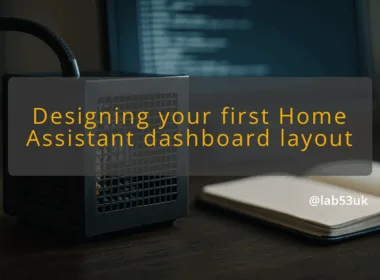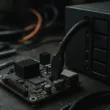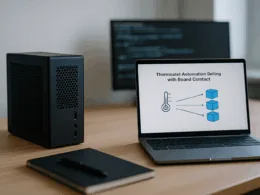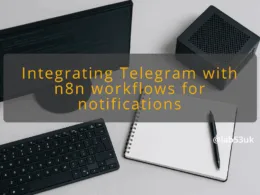Automating AI Agent Deployments with OpenAI’s New Tools
I set this up so you can move from experiment to repeatable deployment without guesswork. I focus on the pieces that trip people up: environment, cloud glue, API wiring, and sensible tests. Read the steps, copy the configs, and skip the marketing spin.
Getting Started with OpenAI Automation
Understanding the Basics of OpenAI Tools
OpenAI automation now spans model access, agent orchestration and runtime controls. Treat the OpenAI APIs as the runtime for model calls and any agent features as a higher-level orchestrator for prompts, tools and state. The important part is to separate intent, tooling and execution: intent lives in your prompts or agent plan, tooling is any external API or function, execution is the code that calls OpenAI and your tools.
Practical note: keep prompts and tool schemas versioned. That avoids subtle breakage when an agent’s toolset changes. Use a simple JSON schema per tool: name, inputs, outputs, auth. That becomes the contract between the agent and your cloud services.
Setting Up Your Environment for Deployment
I build a minimal, reproducible environment. Use a container for the runtime and a separate build pipeline for infra. My baseline:
- A Dockerfile that pins the runtime (Python/Node) and installs the OpenAI client.
- A CI job that runs linting, unit tests and a small integration test hitting a mock OpenAI endpoint.
- Secrets stored in a secrets manager, not in the repo.
Example Dockerfile snippet (Python):
- FROM python:3.11-slim
- COPY requirements.txt .
- RUN pip install -r requirements.txt
- COPY . /app
- CMD [“python”, “run_agent.py”]
Always run a local mock of the OpenAI API for fast iteration. Mocking reduces API costs and gives deterministic failures during CI.
Essential Prerequisites for Automation
You need three things before deploying an agent at scale: credentials, observability and rollback paths.
- Credentials: API keys scoped tightly and rotated regularly.
- Observability: logs, traces and metrics for both the agent process and the underlying model calls.
- Rollback: an easy way to flip to a previous agent version or disable external tools.
Make these concrete. For example, expose a single feature flag in your orchestration layer to disable tool calls. That lets you isolate model behaviour from external side effects during incidents.
Key Considerations for AI Agent Deployment
Think about safety, cost and latency as first-order constraints.
- Safety: restrict tool permissions; validate tool inputs server-side; add a human-in-the-loop for dangerous operations.
- Cost: budget per-session token limits and cap outgoing tool calls. Track tokens per-agent and alert on spikes.
- Latency: colocate your agent runtime near the cloud functions it calls. Network hops kill responsiveness.
I recommend a deployment policy that specifies maximum tokens, allowed tools and the escalation path for misbehaving agents. Store that policy alongside the agent code.
Implementing Automation Strategies
Developing Effective Automation Blueprints
Automation blueprints are the repeatable recipes for agent behaviour and deployment. I define a blueprint as a small repo that contains:
- Agent manifest (intents, tool list, prompt templates).
- Infra-as-code for the runtime and services.
- Tests that exercise both prompts and tool integrations.
A simple blueprint checklist:
- Manifest versioned in Git.
- CI that runs prompt tests with deterministic seeds.
- Infrastructure templates (Terraform/CloudFormation) with parameters for staging and prod.
- Runbook with rollback steps.
Blueprints let you reproduce an AI agent deployment in any environment quickly and consistently. Treat them like product code.
Configuring Cloud Services for Optimal Performance
Match the cloud configuration to agent needs. If the agent makes many small calls, favour higher concurrency with less CPU per instance. If it performs heavy preprocessing, pick fewer, beefier instances.
Concrete settings I use:
- Auto-scaling based on request queue length, not CPU alone.
- Short-lived instances for agent runtime to reduce stateful drift.
- Managed function endpoints for lightweight tool calls to keep the agent process slim.
Network configuration: open only necessary egress rules. Use private endpoints for internal services and NAT gateways sparingly to control costs. Attach IAM roles with least privilege.
Integrating APIs Seamlessly
Design API integrations as clear contracts. Use an adapter pattern between the agent and each external API. The adapter does auth, rate limiting and input validation. That keeps the agent logic clean.
Steps to integrate an API:
- Define the adapter interface: call(input) -> standardized response.
- Implement retries and idempotency keys for non-idempotent operations.
- Throttle at the adapter level, not in the agent.
- Log both request and response with a correlation ID.
Give every external call a correlation ID that traces through logs, metrics and traces. That makes debugging later far less painful.
Testing and Validating Your Deployments
Tests must cover both model responses and tool interactions. Unit test prompt templates with mocked model responses. Integration test the full flow in a staging environment with a shadow of production traffic.
A practical test sequence:
- Unit tests for prompt parsing and output handling.
- Integration tests with mocked tools.
- End-to-end tests in staging using the real OpenAI model at a reduced rate.
- Canary releases to 1–2 percent of traffic, monitoring errors and token use.
Verify state changes. If a deployment modifies external systems, include checks that confirm the change and an automatic rollback if checks fail.
Troubleshooting Common Issues in OpenAI Automation
When things go wrong, follow a short triage:
- Reproduce with a local mock. If it fails locally, fix the logic.
- If it only fails in staging or prod, check secrets and network access.
- Inspect correlation logs for the request ID path; look for timeouts, auth failures, or malformed tool inputs.
Common root causes: misaligned prompt schema, missing IAM permissions, and token limits. Address each with a small, targeted test before rolling a fix.
Best Practices for Ongoing Management
Operational hygiene beats clever hacks. My checklist for ongoing management:
- Rotate keys on a schedule and audit usage.
- Track token usage per agent and set alerts.
- Keep a changelog for prompt edits and manifest changes.
- Run periodic tabletop exercises for incident response.
Keep your automation blueprints and infra code under the same change control as the agent code. That makes deployments auditable and rollbacks straightforward.
Concrete takeaways
- Version everything: prompts, manifests and infra.
- Isolate tools behind adapters and use a single feature flag to disable external effects quickly.
- Test in layers: unit, integration with mocks, staging with real models, then canary.
- Monitor tokens and set hard caps to protect budget.
These practices make OpenAI automation predictable rather than a source of surprise. Follow them and AI agent deployment becomes engineering work, not guesswork.










